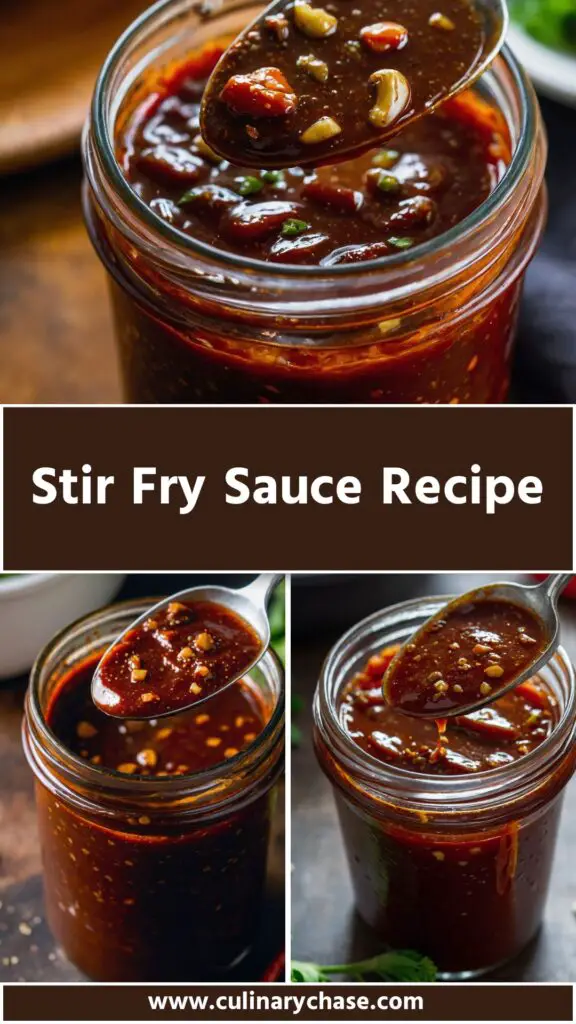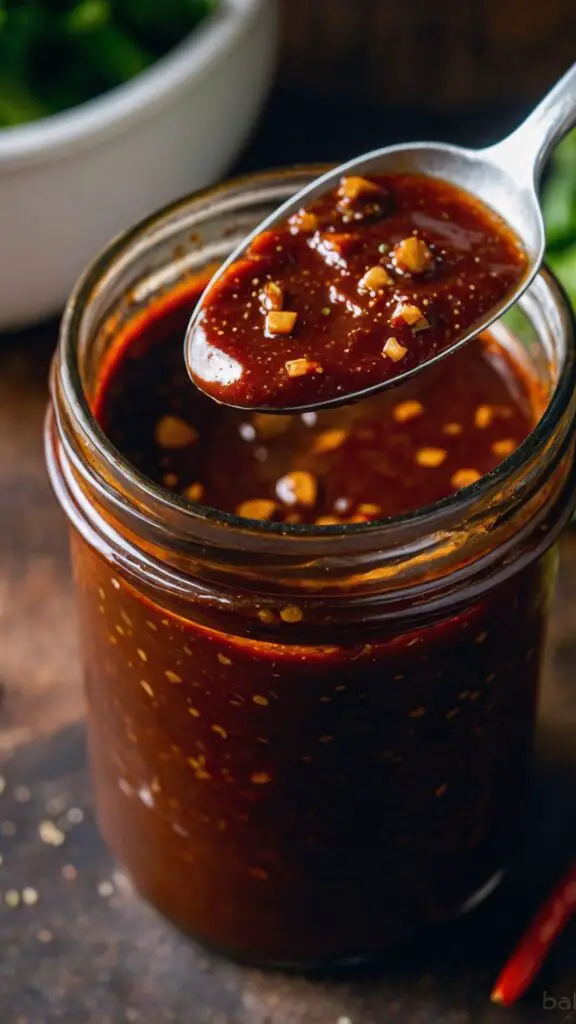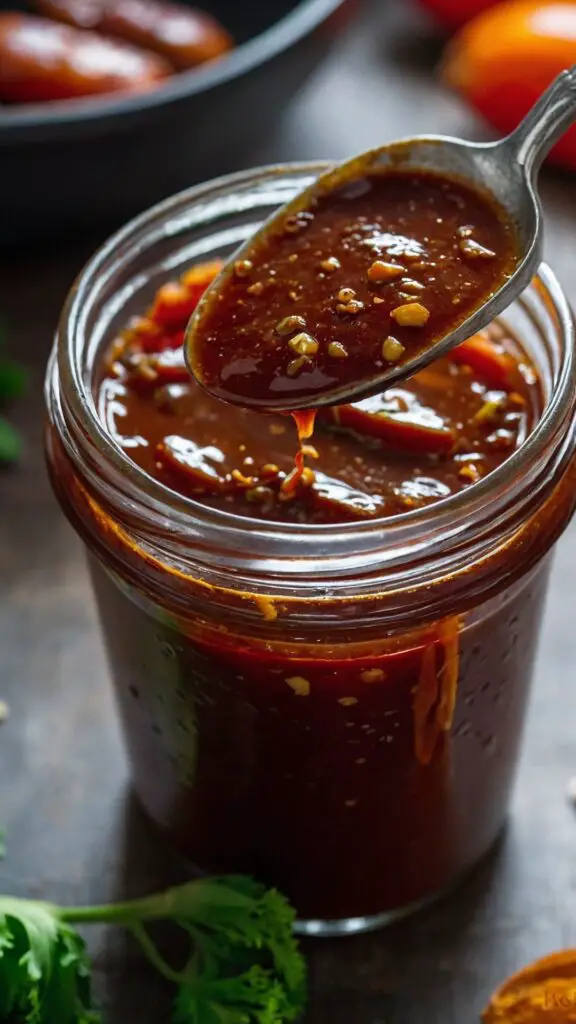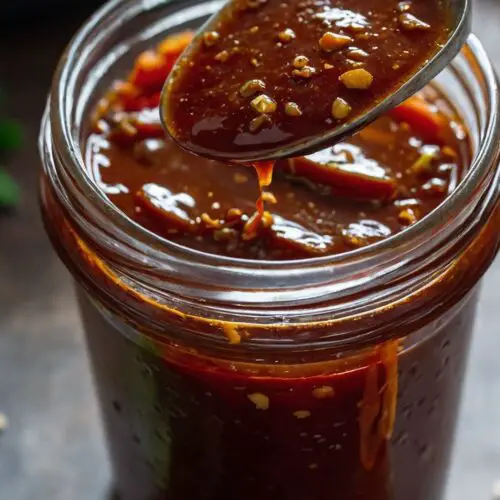Stir Fry Sauce Recipe – Culinary Chase
If you’ve ever sniffed the air and been met with the inviting aroma of a stir-fry sizzling on the stove, then you know there’s something magical about it. I vividly recall my first culinary encounter with stir fry, watching a colorful medley of vegetables and proteins whirl around in a pan like they were dancing.
That moment inspired me to create a stir fry sauce that transforms ordinary dishes into flavor-packed masterpieces. Today, I want to take you on that journey—one that is filled with vibrant tastes and easy steps to whip up a fantastic stir fry sauce.
So, are you ready? Let’s dive into the art of stir fry sauce making.

What is Stir Fry Sauce?
At its core, stir fry sauce is a blend of savory, sweet, sour, and umami flavors. It acts like a conductor, harmonizing every ingredient in your stir fry. The right sauce elevates your meal, making every bite burst with flavor. Think of it as the secret handshake that turns a simple dish into something truly special.
A typical stir fry sauce includes a combination of soy sauce, sweeteners like brown sugar, acidic elements like vinegar, and aromatic additions such as garlic or ginger. Each component works in unison, providing a savory base that enhances whatever you pair it with. Trust me; once you try it, you’ll be eager to have it on hand for all your cooking adventures.
You will also like the following Sauce recipes!
Why You’ll Love This Stir Fry Sauce Recipe
Let me tell you why this stir fry sauce recipe is a game changer. It’s quick, versatile, and absolutely delish. On a hectic weeknight, this sauce can take center stage in a meal that comes together in mere minutes.
Flavor Finesse
This sauce is not just about convenience; it’s expertly crafted. With the perfect balance of sweetness from brown sugar, a hint of spice from red pepper flakes, and the warm zestiness of ginger, it adds depth to your meals. Picture how this would complement vegetables and proteins. It’s like dressing for your salad—just as crucial!
Ingredient Simplicity
You won’t be hunting for exotic ingredients either. Everything you need is likely already in your pantry. No need for a treasure map here! Just staple items that you’ll feel good about using.
Customizable to Your Liking
Whether you’re a spice junkie, a sweet tooth, or someone who loves tangy flavors, this sauce adapts to your preferences. It can be adjusted with just a few tweaks to suit your taste buds. With this recipe, you become the chef!
The Ingredients
Now, let’s get down to the essentials. Here’s what you’ll need for this incredible stir fry sauce:
- 1 tablespoon cornstarch: For thickening the sauce and giving it that silky finish.
- ½ cup reduced-sodium soy sauce: This serves as the savory and umami base of your sauce.
- 1–2 teaspoons freshly grated ginger root: For a warm, zingy kick.
- ½ teaspoon miso paste: Adds a delightful umami depth.
- 2 garlic cloves, finely minced: For that bold flavor we all adore.
- 1 tablespoon brown sugar or natural honey: Sweetness to balance savory notes; feel free to adjust.
- ½ cup low-sodium vegetable broth (or plain water): For a lighter sauce.
- ½ tablespoon rice wine vinegar: A gentle touch of tanginess.
- 1 teaspoon fresh lime juice: Brightness to elevate flavors.
- 1 teaspoon toasted sesame oil: A nutty, aromatic finish.
- Pinch of red pepper flakes: Optional, for a hint of heat.
This collection of ingredients sets the stage for a delicious adventure. Gather everything before we start so you can fly through the process.

Step by Step Instructions
Step 1: Prepare Your Ingredients
Before you even think of throwing this sauce together, take a moment to prepare everything. Grate the ginger and mince the garlic. Measure each ingredient carefully. This will ensure you achieve that balanced flavor we discussed.
Step 2: Mix the Dry Ingredients
In a mixing bowl, combine the cornstarch and brown sugar (or honey). Whisk them together quickly to prevent any clumps from forming. This step is crucial for a smooth sauce.
Step 3: Add the Liquids
To your dry mix, add the reduced-sodium soy sauce and vegetable broth (or water). Stir it well until everything is combined. Next, add in the rice wine vinegar and lime juice. These ingredients will awaken the mixture.
Step 4: Incorporate the Aromatics
Now comes the fun part. Stir in the minced garlic, freshly grated ginger, and miso paste. Each of these ingredients adds a layer of flavor that’s irresistible. Mix them until they’re fully integrated. If you enjoy heat, sprinkle in a pinch of red pepper flakes at this point.
Step 5: Thicken the Sauce
Pour this mixture into a small saucepan over medium heat. Stir it frequently to prevent sticking. As it heats, the cornstarch will activate, thickening the sauce to a perfect consistency. This usually takes about 5-7 minutes.
Step 6: Add the Sesame Oil
Once your sauce has thickened, take it off the heat. Stir in the toasted sesame oil for that nutty aroma we talked about. This final touch is what makes this sauce sing.
Step 7: Taste and Adjust
Here’s where you play the role of chef. Take a tiny taste. Is it perfect? If you want more sweetness, add another dash of sugar. Need more heat? Toss in a bit more red pepper flakes. Remember, you are in control.
Tips & Tricks
- Don’t Skimp on Fresh Ingredients: The freshness of garlic and ginger dramatically influences the flavor. Use fresh, not pre-minced.
- Adjust Sauce Consistency: For a thinner sauce, simply add a bit more broth or water.
- Store It Right: Keep any leftover sauce in an airtight container in your fridge for up to two weeks. It only improves with age!
- Mix Your Proteins: Use this sauce with different proteins like chicken, shrimp, or tofu. Change it up based on what you have on hand.
- Amp Up Your Vegetables: Broccoli, bell peppers, and snap peas work wonderfully. Don’t hold back—try new veggies!
Nutrition Information
A serving of this stir fry sauce (about 2 tablespoons) includes approximately:
- Calories: 35
- Protein: 1g
- Carbohydrates: 6g
- Fats: 1g
- Sodium: Varies based on soy sauce used, around 300mg.
This sauce is low in calories and provides great flavor without drastic calorie counts.
Can I Store Stir Fry Sauce?
Absolutely! If you make a double batch (and who wouldn’t?), you can store it. Pour any leftovers into a glass container and seal it tightly. Refrigerate, and it should last for about two weeks. If you’d like to keep it longer, freeze it in ice cube trays and pop out portions as needed.

What Can I Serve with Stir Fry Sauce?
The beauty of this sauce is its versatility! Here are some great ways to enjoy it:
- Ultimately, Over Noodles: Toss cooked noodles with your stir fry sauce and any mix of veggies and proteins.
- On Rice: A classic pairing! Serve your stir fry or sauce over steamed rice.
- With Cauliflower Rice: For a low-carb option that keeps things light.
- In Spring Rolls: Drizzle it over fresh spring rolls for an added zing.
- As a Marinade: Before cooking, use it as a marinade for your ingredients to infuse that flavor even before they hit the pan.
Variations
Spice things up with these alternatives:
- Spicy Szechuan Style: Increase the red pepper flakes and add a splash of chili oil for a fiery kick.
- Sweet and Sour Fusion: Substitute half the soy sauce with pineapple juice. Enjoy a tangy twist!
- Garlic Lovers: Double the garlic for a more pronounced flavor—if you’re feeling adventurous.
- Peanut Sauce Remix: Mix in a tablespoon of peanut butter for a richer sauce that echoes Thai flavors.
- Herbal Twist: Stir in chopped fresh cilantro or basil just before serving for a burst of freshness.

Stir Fry Sauce Recipe
Equipment
- Bowl
- saucepan
Ingredients
- 1 tablespoon cornstarch: For thickening the sauce and giving it that silky finish.
- ½ cup reduced-sodium soy sauce: This serves as the savory and umami base of your sauce.
- 1 –2 teaspoons freshly grated ginger root: For a warm zingy kick.
- ½ teaspoon miso paste: Adds a delightful umami depth.
- 2 garlic cloves finely minced: For that bold flavor we all adore.
- 1 tablespoon brown sugar or natural honey: Sweetness to balance savory notes; feel free to adjust.
- ½ cup low-sodium vegetable broth or plain water: For a lighter sauce.
- ½ tablespoon rice wine vinegar: A gentle touch of tanginess.
- 1 teaspoon fresh lime juice: Brightness to elevate flavors.
- 1 teaspoon toasted sesame oil: A nutty aromatic finish.
- Pinch of red pepper flakes: Optional for a hint of heat.
Instructions
Step 1: Prepare Your Ingredients
- Before you even think of throwing this sauce together, take a moment to prepare everything. Grate the ginger and mince the garlic. Measure each ingredient carefully. This will ensure you achieve that balanced flavor we discussed.
Step 2: Mix the Dry Ingredients
- In a mixing bowl, combine the cornstarch and brown sugar (or honey). Whisk them together quickly to prevent any clumps from forming. This step is crucial for a smooth sauce.
Step 3: Add the Liquids
- To your dry mix, add the reduced-sodium soy sauce and vegetable broth (or water). Stir it well until everything is combined. Next, add in the rice wine vinegar and lime juice. These ingredients will awaken the mixture.
Step 4: Incorporate the Aromatics
- Now comes the fun part. Stir in the minced garlic, freshly grated ginger, and miso paste. Each of these ingredients adds a layer of flavor that’s irresistible. Mix them until they’re fully integrated. If you enjoy heat, sprinkle in a pinch of red pepper flakes at this point.
Step 5: Thicken the Sauce
- Pour this mixture into a small saucepan over medium heat. Stir it frequently to prevent sticking. As it heats, the cornstarch will activate, thickening the sauce to a perfect consistency. This usually takes about 5-7 minutes.
Step 6: Add the Sesame Oil
- Once your sauce has thickened, take it off the heat. Stir in the toasted sesame oil for that nutty aroma we talked about. This final touch is what makes this sauce sing.
Step 7: Taste and Adjust
- Here’s where you play the role of chef. Take a tiny taste. Is it perfect? If you want more sweetness, add another dash of sugar. Need more heat? Toss in a bit more red pepper flakes. Remember, you are in control.
Notes
- Don’t Skimp on Fresh Ingredients: The freshness of garlic and ginger dramatically influences the flavor. Use fresh, not pre-minced.
- Adjust Sauce Consistency: For a thinner sauce, simply add a bit more broth or water.
- Store It Right: Keep any leftover sauce in an airtight container in your fridge for up to two weeks. It only improves with age!
- Mix Your Proteins: Use this sauce with different proteins like chicken, shrimp, or tofu. Change it up based on what you have on hand.
- Amp Up Your Vegetables: Broccoli, bell peppers, and snap peas work wonderfully. Don’t hold back—try new veggies!
Nutrition
Frequently Asked Questions
1. Can I make this sauce in advance?
Yes! You can prepare this sauce up to a week in advance. Just make sure to store it in a sealed container in the fridge.
2. Can I make this sauce gluten-free?
Certainly! You can substitute the soy sauce with a gluten-free option like tamari or coconut aminos. Both work well and keep the flavor profile intact.
3. Can I use this sauce for other dishes?
Absolutely! This sauce is versatile. Use it for marinating proteins, as a dipping sauce, or drizzled over roasted veggies. Unleash your creativity.
4. How do I thicken the sauce if I forget the cornstarch?
If you find yourself without cornstarch, you can use arrowroot powder or even a bit of flour. Just make sure to mix it well with water before adding to the sauce to avoid lumps.
5. What’s the perfect timing for adding the sauce to my stir fry?
Add the stir fry sauce to your pan toward the end of cooking. After the meat and veggies are fully cooked, introduce the sauce and let it simmer for a minute to truly bring everything together.
Conclusion
And there you have it! A beautifully crafted stir fry sauce that invigorates meals and tantalizes taste buds. From the initial mixing to that beautiful finish, you’ve now got the knowledge and skills to transform your meals.
I hope you find joy in making this sauce, just as I have. It’s truly remarkable how something so simple can elevate our culinary experiences. So, grab those ingredients, fire up the stove, and enjoy the delightful dance of flavors you’ve created! Trust me; your taste buds will thank you.
